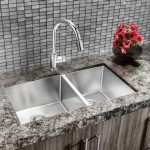Floating floors are a great choice for kitchen floors. They are easy to install, provide a warm feel, and come in a variety of styles and materials. If you’re considering installing a floating floor in your kitchen, here’s everything you need to know.
Types of Floating Floors
Floating floors come in a wide range of materials, including laminate, vinyl, and engineered wood. Laminate is a popular choice for kitchens, as it is affordable and easy to install. Vinyl is another popular choice, as it is water-resistant and easy to clean. Engineered wood is also a great option, as it provides a warm and natural look.
Installing a Floating Floor
Installing a floating floor is relatively easy. Before you begin, you’ll need to make sure the subfloor is clean and level. Then, you’ll need to lay down a layer of underlayment, which will help provide a sound and level base for the floor. Finally, you’ll need to lay the flooring down, making sure to leave a small gap between the walls and flooring.
Caring for a Floating Floor
A floating floor can last for many years with proper care. To keep your floor looking its best, make sure to sweep or vacuum it regularly to remove dirt and debris. You should also mop your floor occasionally with a mild cleaner to help keep it clean and looking its best.
Benefits of a Floating Floor
Floating floors offer a variety of benefits for your kitchen. They are easy to install, provide a warm feel, and can be found in a wide range of materials and styles. Additionally, floating floors are affordable and easy to care for, making them a great option for any kitchen.















Related Posts








